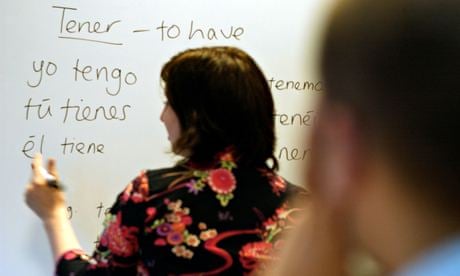In my last post, I wrote about how difficult it was attempting to learn a new language using only an app. Duolingo is well designed, but I'd come to the conclusion that I (and I suspect other people) have difficulty motivating myself to stay dedicated to practising and learning a new language (in my case Spanish) with nothing to push them other than nagging notifications from their smartphone.
It's now a week later and I wish I had better news to report back about my progress – alas that's not quite the case.
However, as I was sitting down to write this post, I started really thinking about why I was having so much trouble learning Spanish via only a smartphone app. And it didn't take me that long to come to a meaningful realisation – in keeping to the rules of the exercise, I had unfortunately limited myself.
Basically, one cannot live by smartphone app exercises alone, especially when those exercises are built entirely on a model of naturalistic learning.
So let's back up a bit. There are a lot of models for how humans learn things, and I'm not going to try and get into all of that here. But Duolingo, as an app, seems committed to a naturalistic, or organic model of language learning. What that means is that you learn grammar and language patterns by association and context, rather than by systematisation or rules.
Initially I thought this method was great – let my brain organically make the connections about which conjugation of verb makes the most sense given the context – that's how children learn, right? I mean they get it wrong at first (who hasn't delighted in hearing a toddler mis-conjugate an irregular verb like "to get"), and eventually they sort it out.
Here's the thing – that doesn't work for me. Maybe after 10 straight years of school-based language learning, where there were German verb conjugation and adjective ending charts, plus countless Chinese characters to be memorised, my mental pathways don't know how to do organic or naturalistic learning anymore.
Because let me tell you, I stayed true to my pledge to only use the Duolingo app during this challenge, and to not look up a chart for how regular Spanish verbs should be conjugated. And it totally hindered my ability to internalise the language. For me (and a lot of people I imagine) languages other than your native tongue are comprised of a combination of grammar rules and vocabulary.
This app has taught me a ton of vocabulary, but I'm still not sure I know any real grammar – I don't exactly know why the conjugation of verbs that come after nosotros (we) are how they are. Or what the system is that governs the other verbs that might follow that pattern.
Perhaps it's just that systematised language learning has made me dependent on learning new languages the same way I learned the ones I have already learned. And someone totally new to foreign language study might pick up the naturalistic methods of Duolingo and run with them.
I, on the other hand, have spent the last four weeks really wanting a damn verb chart.
Alan Haburchak is learning Spanish using Duolingo for the Guardian's online language learning challenge. Follow his progress with the case for language learning series or on Twitter using the hashtag #LearnALanguageOnline.

Comments (…)
Sign in or create your Guardian account to join the discussion